Picture this: you’re standing high in the Himalayas of Arunachal Pradesh, surrounded by majestic peaks stretching endlessly into the distance. The January sun feels powerful on your face, despite the cold mountain air. And then you see her, a woman in traditional dress, stirring in an enormous pot over the fire, while white sheets of handmade paper stand like sentinels in the sun.
Let me take you along to that magical day in Mukto, where I discovered how traditional crafts are still passed down with so much love in the remote mountains of the Himalayas…
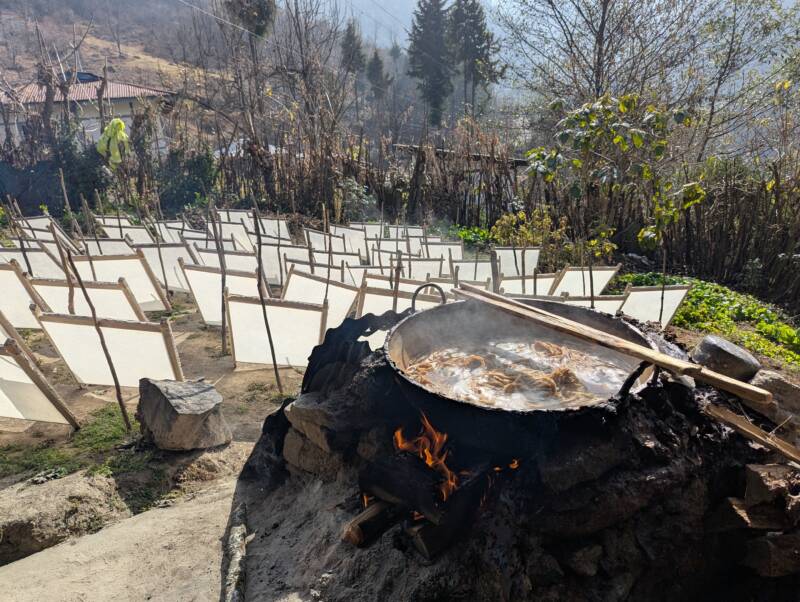
This was the moment I first understood what authentic traditional crafts truly mean, craftsmanship passed down through generations, far from the modern world.
I thank this wonderful experience to Sange from The Holiday Scout. Read more about why I can recommend travelling with Holiday Scout
My Journey to Mukto: A Hidden Gem Near Tawang
That morning we departed from the famous Tawang, known for its imposing monastery and strategic location near the Chinese border. As our car wound its way through the meandering mountain paths toward Mukto village, I couldn’t take my eyes off the landscape. Every bend brought new wonders – valleys opening like green carpets, mountain walls resembling natural cathedrals.
But it wasn’t until we reached Mukto that the real magic began.
The village consists of no more than twenty, thirty houses along the road, with a small side street. Simple, you might think. But when I stepped out of the car and saw those traditionally dressed women along the road – one with her baby on her back – I felt something special. Their curiosity was as great as mine. Where do you come from? What brings you here?
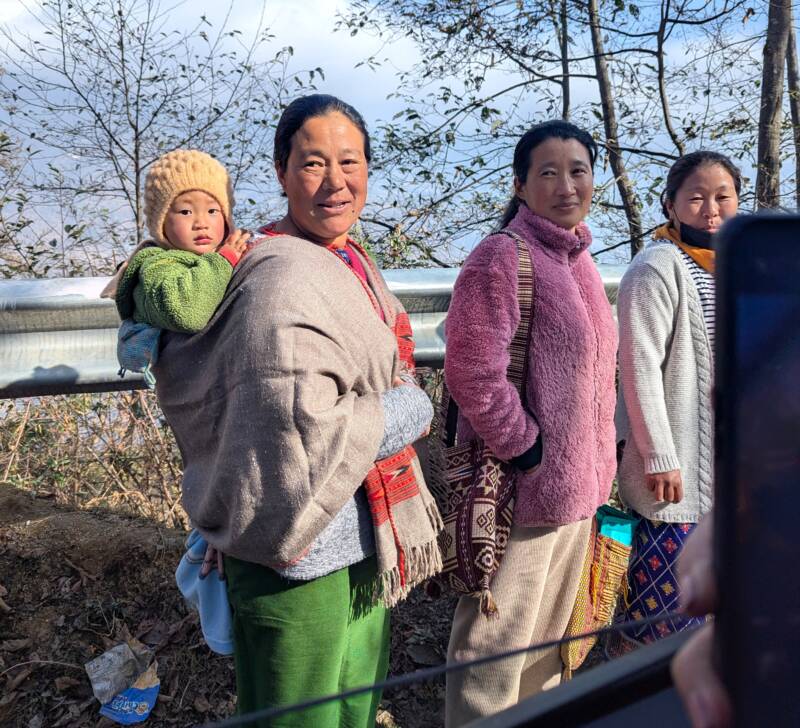
And there I stood, high in the Himalayas, in a village you don’t just stumble upon. Surrounded by Indian women who were taking me on their journey. It felt like a gift – the complete, authentic experience.
White Flags and Prayers in the Wind
Before we stopped for the workshop, we first drove further along the winding road against the mountain wall. And oh, what views! After every bend my jaw dropped further. Between the white prayer buildings, I saw tall poles with narrow, long flags fluttering.
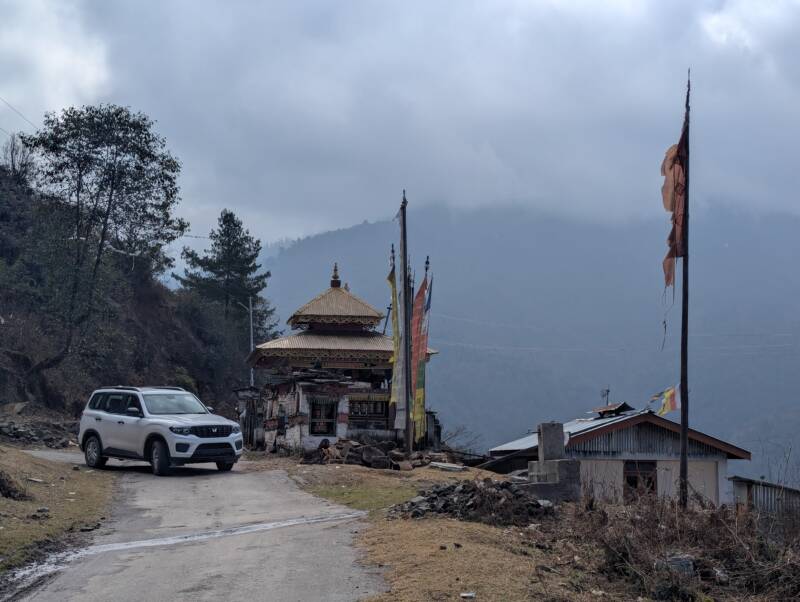
“Those flags are filled with written prayers,” Sange explained. “They blow into the world like that.” What a beautiful idea, I thought. Prayers that the wind carries along, over these pristine mountains, to who knows where.

Traditional Crafts in the Himalayas: The Art of Paper Making
It was the scent that struck me first – wood, smoke, and something I couldn’t place. We walked down a narrow path, downward, and then I saw it: a woman by an enormous pot over the fire, stirring with a large stick. Before her stood those white plates I had seen earlier, fresh sheets of handmade paper from Daphne bark, facing the sun.
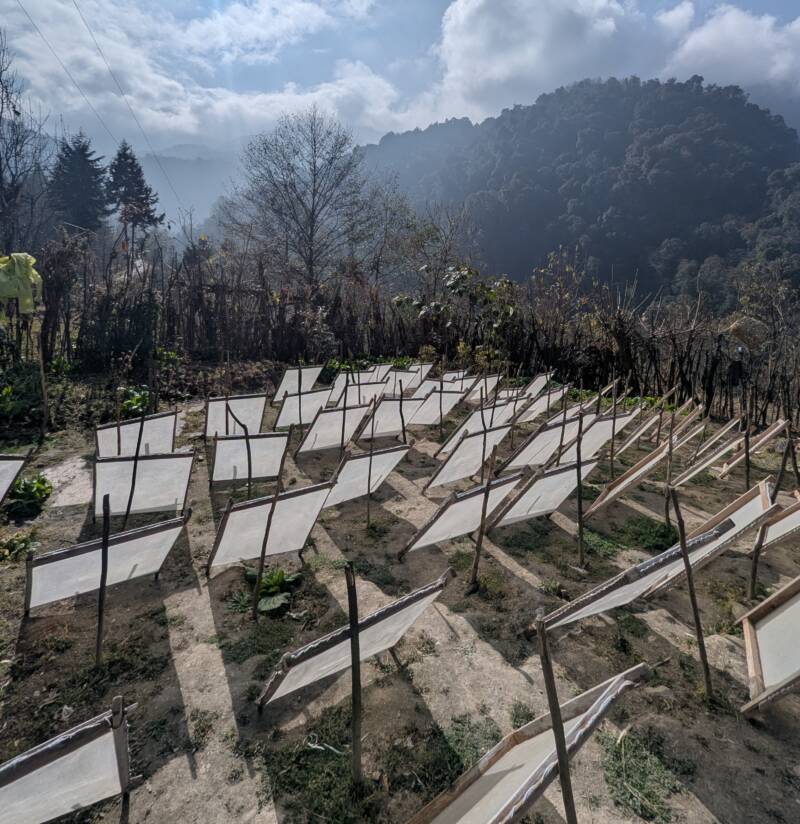
“Bark from the Daphne tree,” Sange explained. “That’s what the traditional paper is made from. This papermaking tradition is one of the oldest traditional crafts of the Himalayas, specifically for use in Buddhist monasteries.”
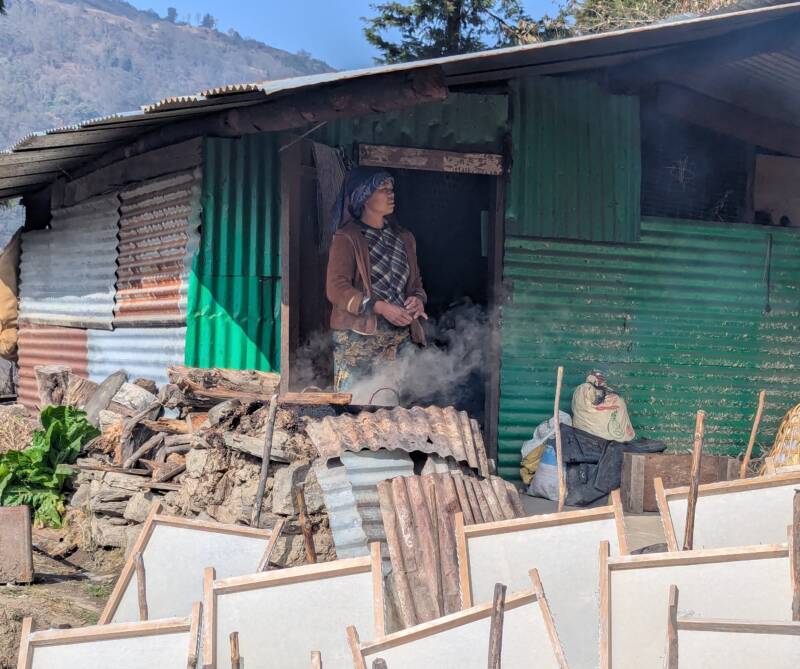
The woman kept stirring and gazed ahead, over the drying papers toward the distant Himalayas. There was something meditative in her movements, as if she had done this thousands of times.
At the next workshop, another woman sat on the ground with a large wooden hammer in her hands. Before her lay a lump of cooked tree bark, and with rhythmic blows she struck it. Thock, thock, thock – the sound echoed against the mountain walls.
“Started early this morning,” she told Sange. “Beautiful weather, early sun.” And then came the question that changed everything: “Would you like to try?”
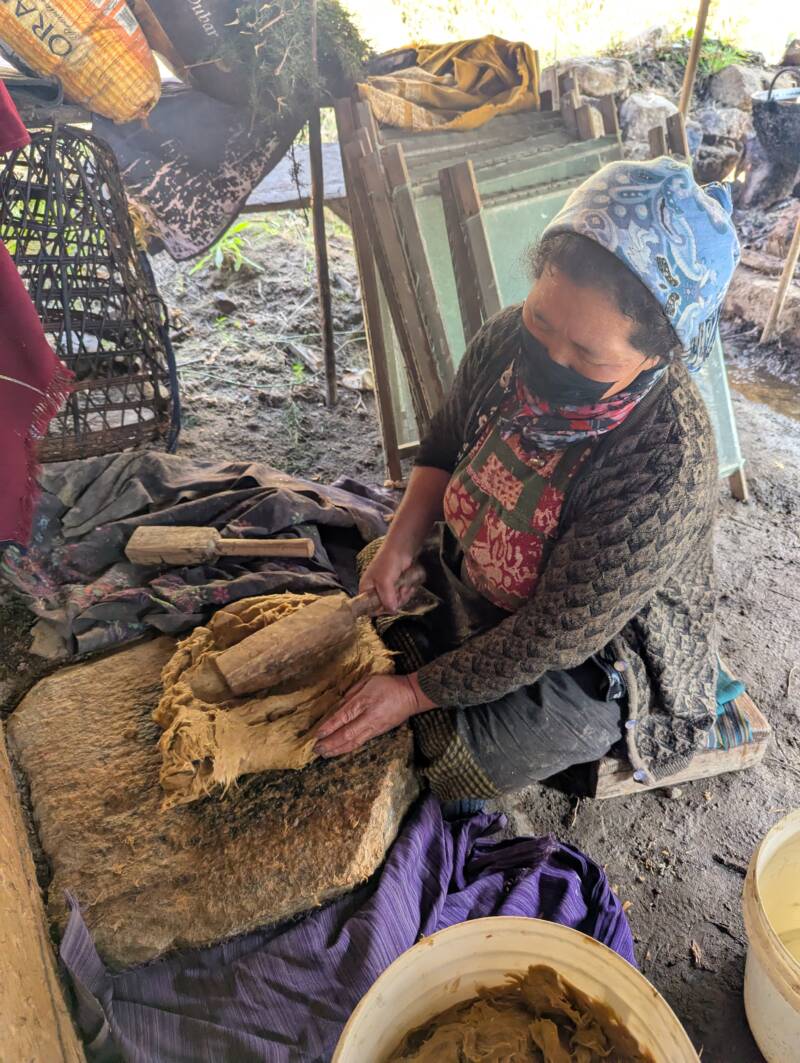
My First Steps in Ancient Traditional Crafts
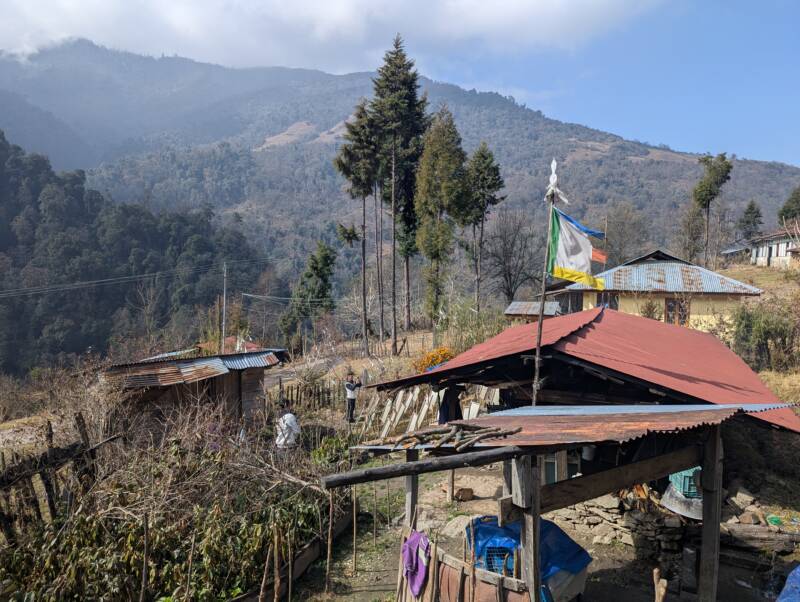
I sat down on that low wooden bench, still warm from where she had been sitting. With my hands I grasped that lump of cooked tree bark, cold, wet and so different from anything I knew. I made a ball from it and lifted the wooden mallet.
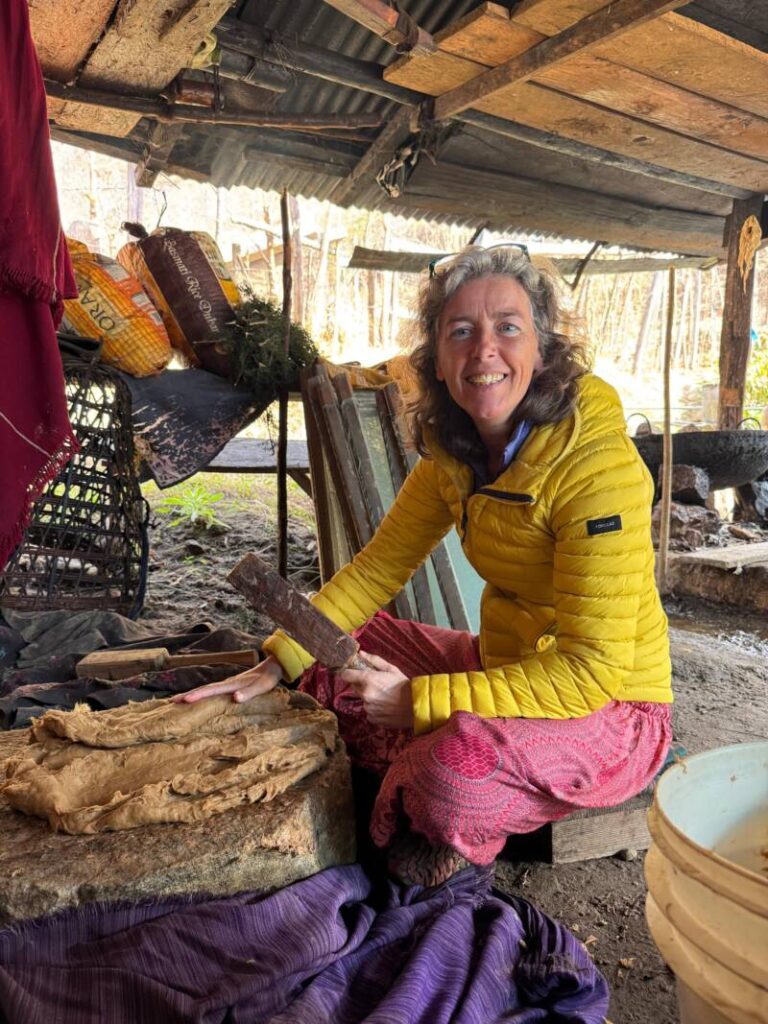
The first blow was cautious. The second somewhat firmer. And then I found the rhythm, thock, thock, thock.. the same sound I had just heard, but now from my own hands. It was strange how fulfilling it felt, this simple handwork high in the mountains.
After a few minutes the woman nodded approvingly. With the pulp in a bucket we walked to the water basin further along. What followed was pure magic: how she placed a handful of bark in the sieve, how she made the water spin with a homemade paddle, how the lump separated and distributed into a thin, even layer.
“Looks so easy,” I thought. Until I was allowed to try it myself.
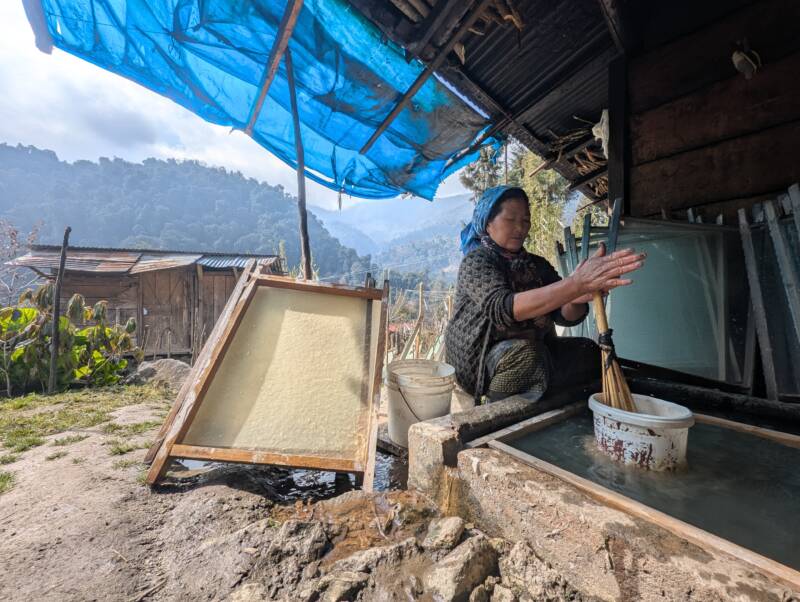
My first attempt was… well, let’s say it looked more like abstract art than paper. The woman laughed kindly and guided my hands, showed me again the rhythm, the movement, the patience required.
Eventually I succeeded. A thin layer of pulp on the sieve – my first sheet of handmade paper, high in the Himalayas.
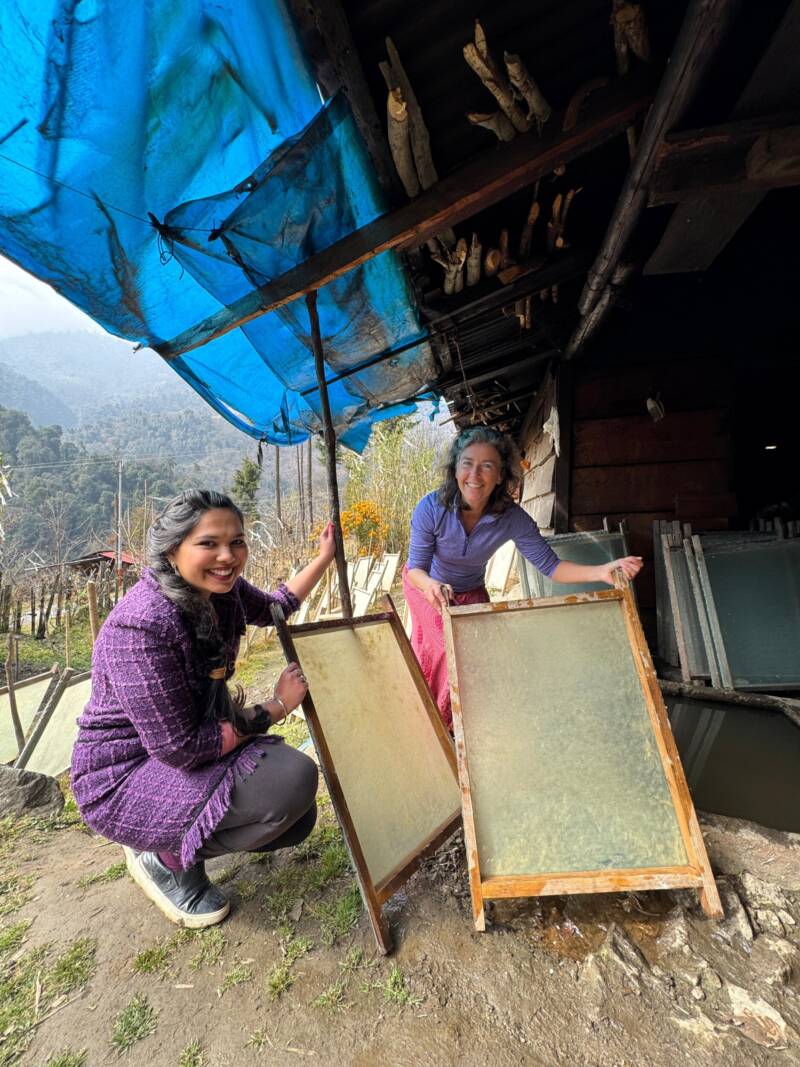
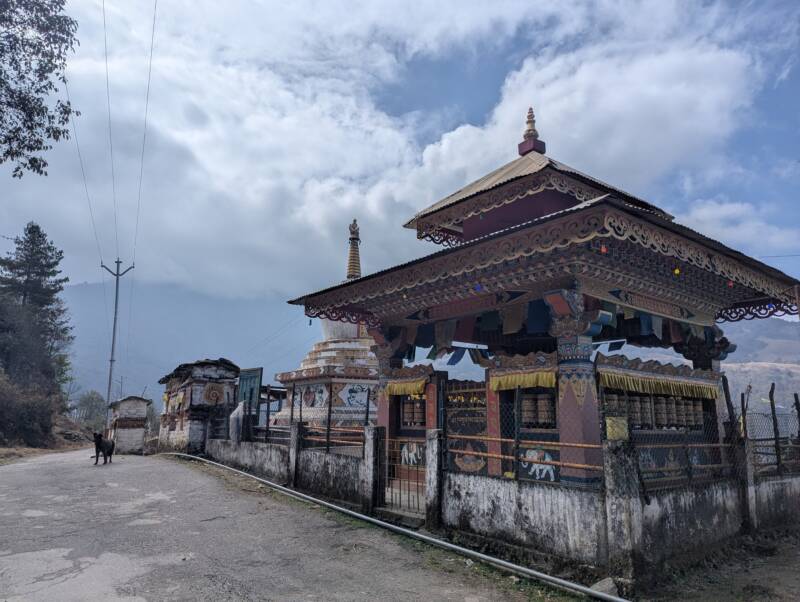
Mingdu’s Yak Hair Atelier: Ancient Traditional Crafts
Later that afternoon we sat on the terrace at Mingdu Wangmu’s, one of the last craftspeople in Mukto who still practices traditional crafts, specifically making yak hats in an authentic way. This craft is typical of the traditional crafts of Arunachal Pradesh. In the warm January sun she was busy finishing a yak hat, imposing, like we had seen before in this part of the Himalayas.
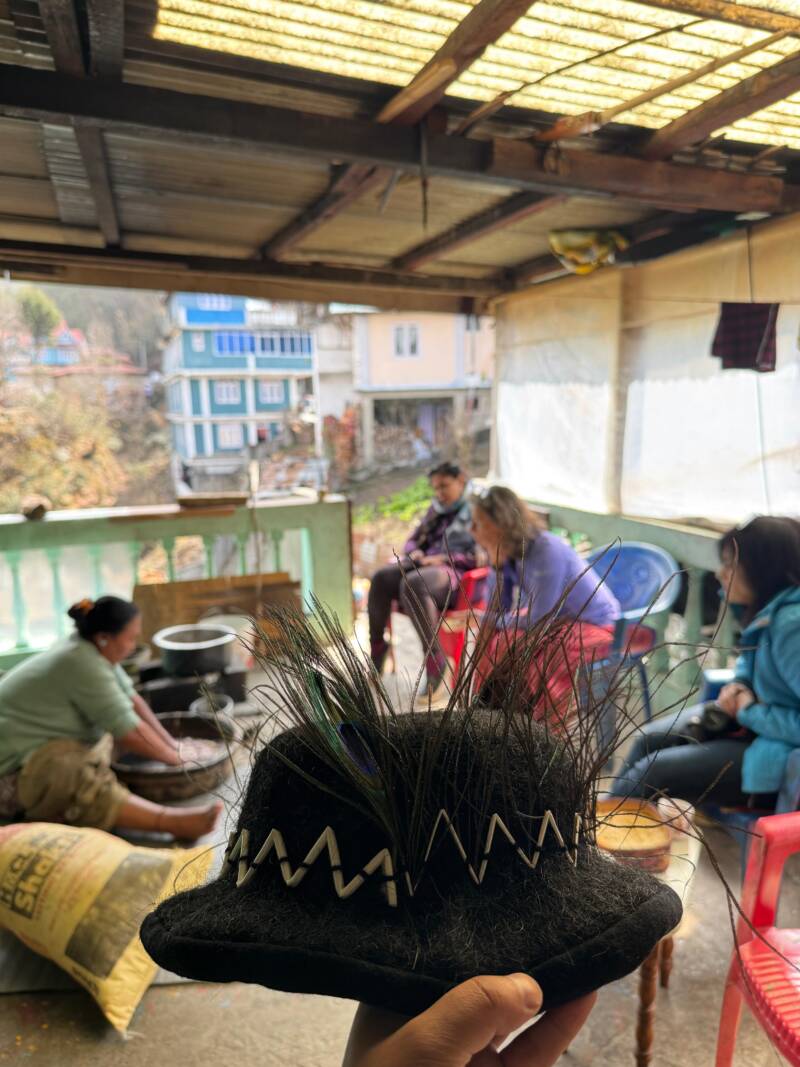
“How do you actually make such a hat?” I asked curiously. Her eyes lit up. “I’ll show you!”
Her husband was sent away to fetch raw yak hair, while she looked for a wooden basin and filled it with water. What followed was a dance of hands and material – yak hair being cleaned, tangles removed, the hair rolled through the water time and again.

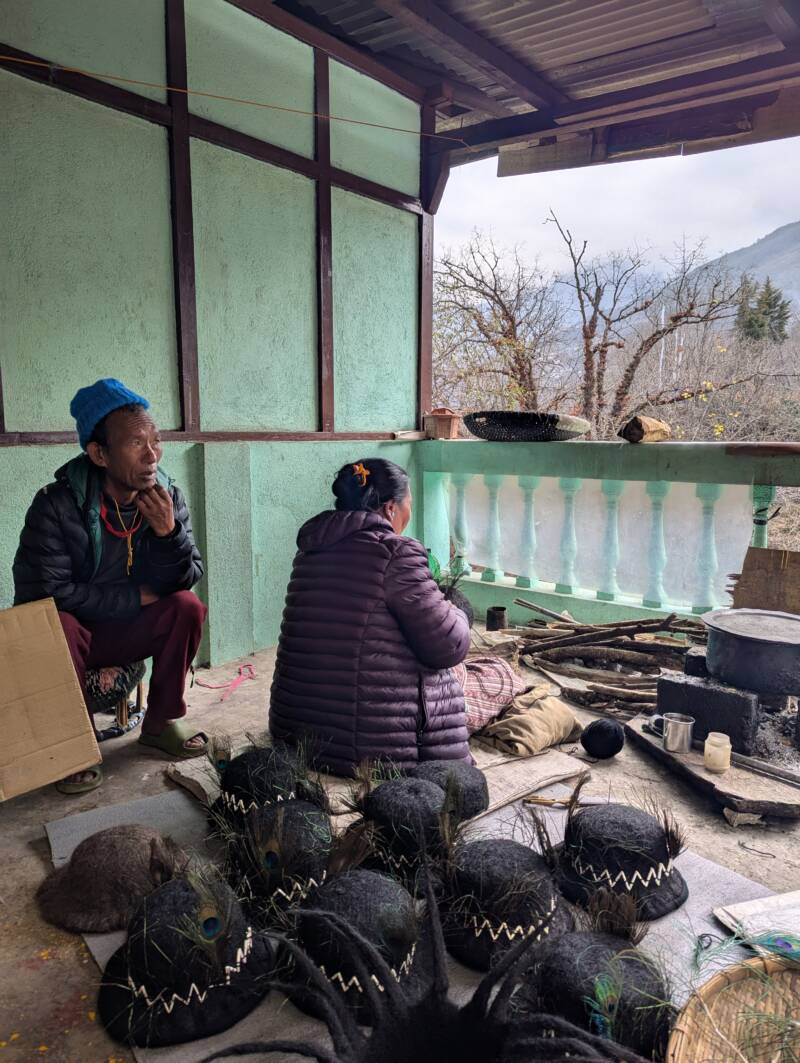
It reminded me of felting, that movement of wool slowly becoming one. But this was different, rougher and more authentic.
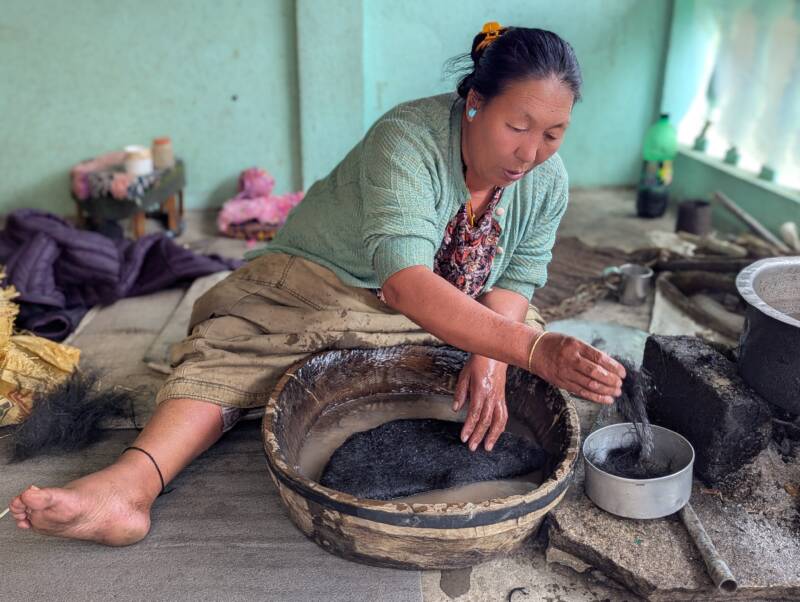
Twenty minutes later she brought out a bowl. She threaded a thick thread through the edge of what had now become a thick, round pad of yak hair. Around the bowl she pulled the thread tight, so the hair took the shape of the bowl.
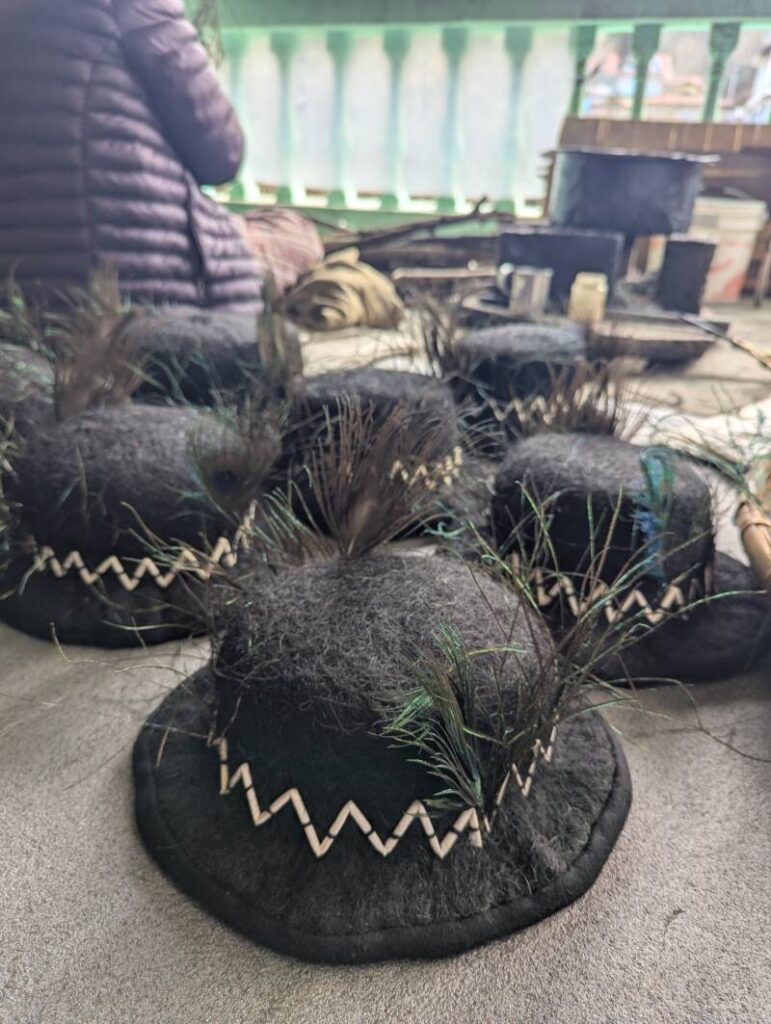
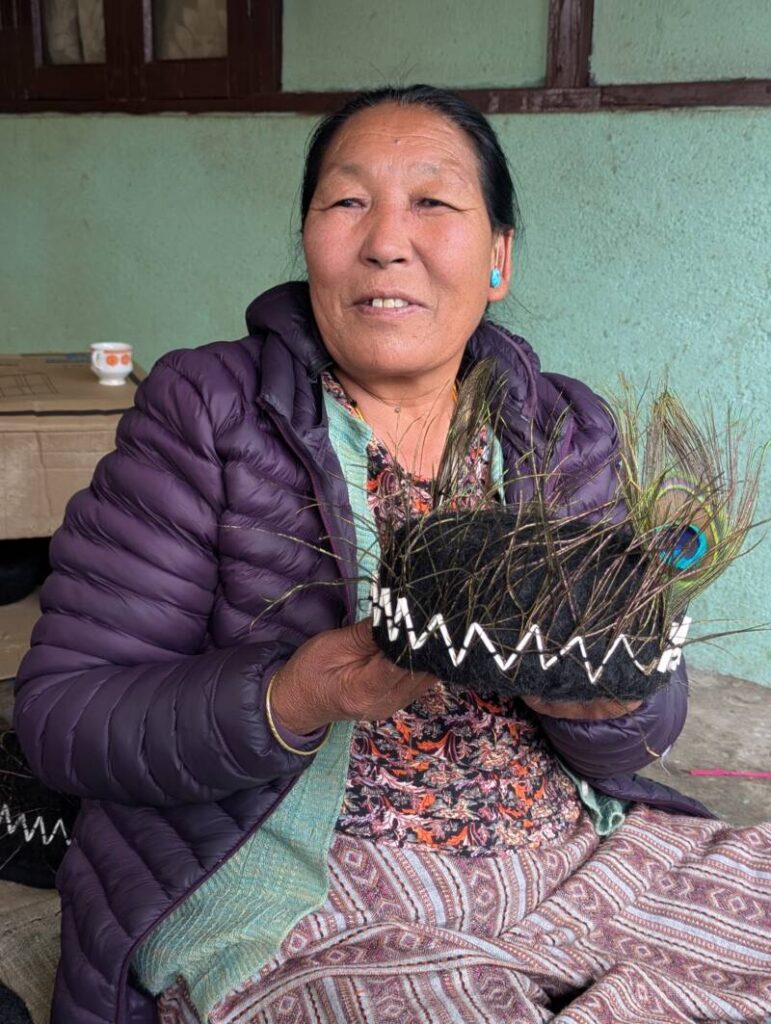
“So simple,” I thought. “Just try it yourself.”
Just like with the papermaking, it proved harder than it looked. My attempt was… let’s say Mingdu kindly corrected me. Very kindly.
The Finishing Touch
When the shape was to her liking, she placed the hat in the sun to dry. But the most beautiful part was yet to come: the finishing. A long peacock feather was used as a decorative edge, with the eye of the feather as the centerpiece.
“So simple, but so beautiful,” I whispered. Mingdu beamed. “Different tribes, different models,” she explained, while showing me more variations.
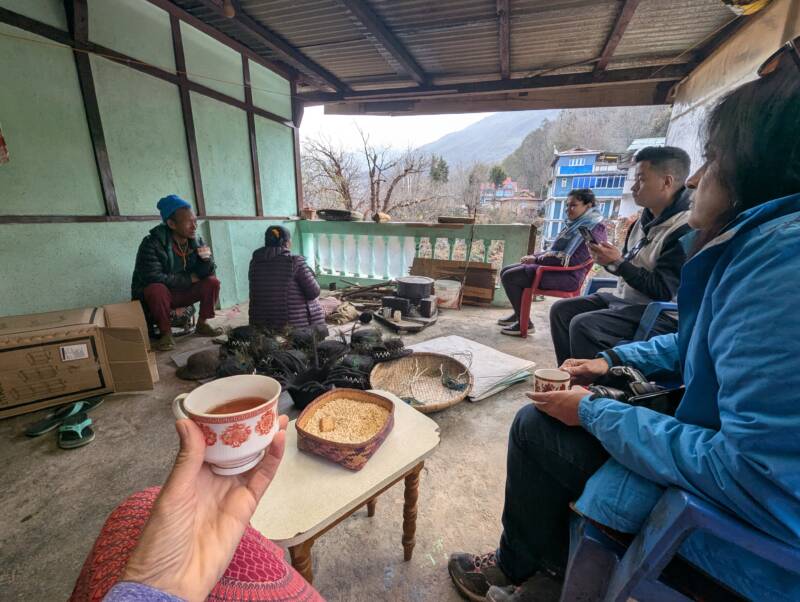
While we drank tea and ate a cookie, I looked around. The sun slowly sank behind the mountain peaks, golden light danced over the fresh hats lying to dry.
Why Traditional Crafts Are So Special
There are moments while traveling when you realize you’ve learned more than you ever expected. Not just about techniques or traditions, but about patience, about the beauty of simplicity, about the value of craftsmanship passed down through generations.
In Mukto I learned that true traditional crafts don’t lie in perfection, but in intention. In the hands that lovingly shape what they’ve been making for generations. In the gaze of a woman staring at the horizon while stirring in her pot with tree bark for traditional papermaking.
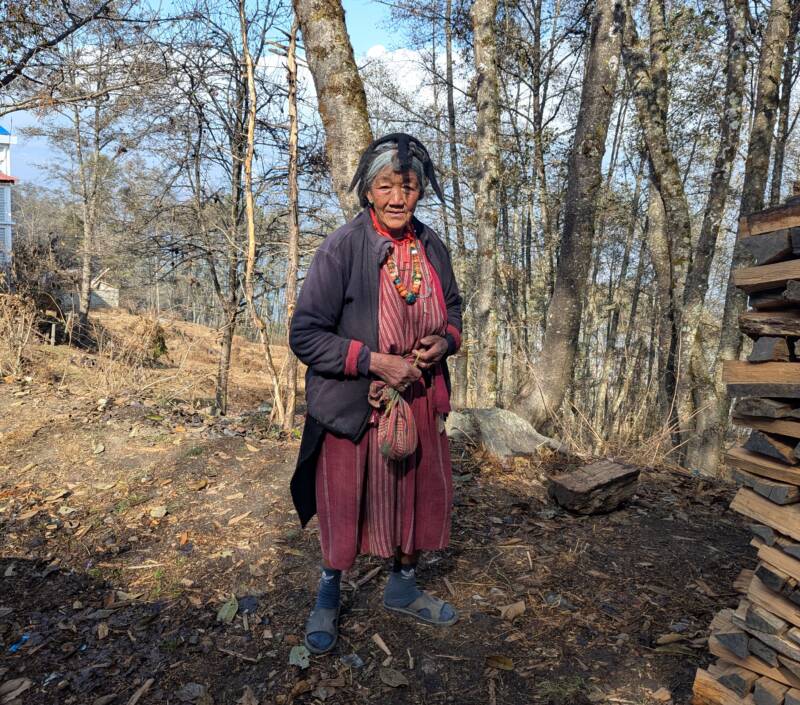
I learned that traveling is more than checking off sights. It’s opening yourself to moments like these – where you as an outsider are invited to participate in traditional crafts that are much larger than yourself.
Practical Tips for Discovering Traditional Crafts
Perhaps you’re wondering: “How do I find such authentic traditional crafts during my travels?” Or: “Where can I find such craft workshops?” The answer is simpler than you think: be curious about traditional crafts. Step off the beaten paths. Ask locals about their traditions. And most importantly – be willing to get your hands dirty learning traditional crafts.
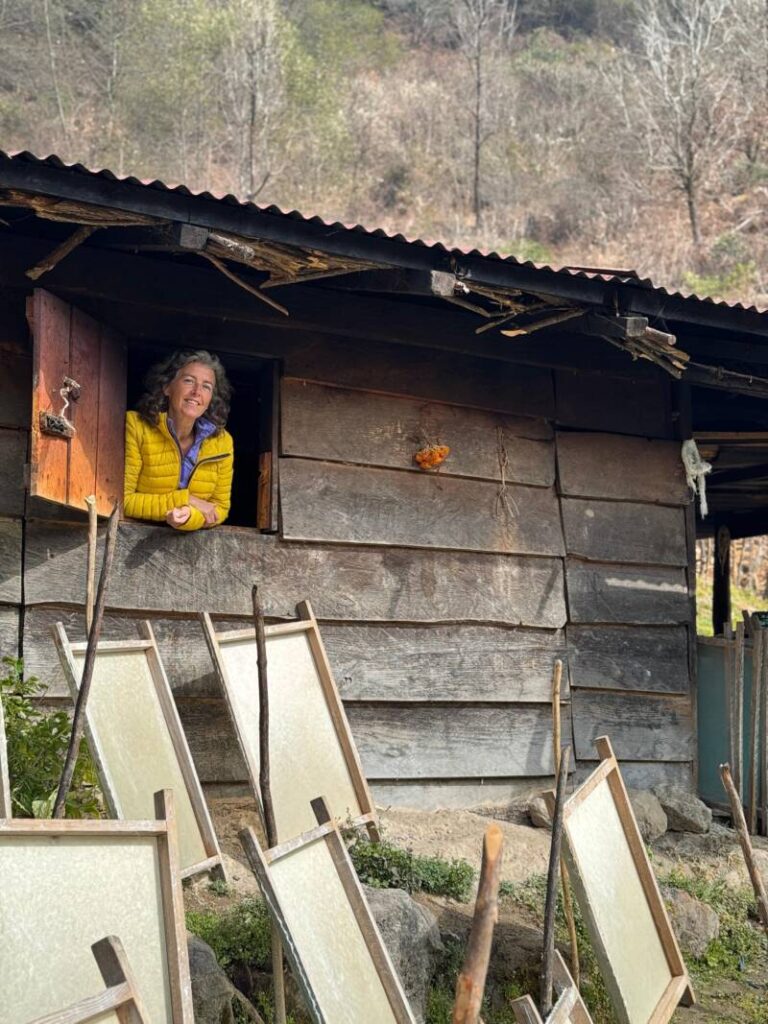
Because sometimes the most beautiful travel experiences aren’t those you can book, but those you can earn by being open to what comes your way.
Practical tips for traditional crafts experiences:
- Travel in small groups or alone – locals prefer sharing traditional crafts with smaller groups
- Learn a few words of the local language, even if it’s just “thank you”
- Show genuine interest in traditional crafts – ask how, why, when
- Be willing to pay for workshops in traditional crafts, but negotiate respectfully
- Take photos only with permission, and share digital copies if possible
The Journey Continues
As we left Mukto that evening, I looked back at the small village. Somewhere there my paper and yak hair were still drying in the last rays of sun. Small memories of a big day. The mountains watched, as always. But now I felt different – as if I hadn’t just been a tourist, but had been allowed to be part of something that has existed for centuries.

And that feeling, you take with you. Long after the photos have been viewed and the stories told, that feeling remains. This feeling of connection, of learning, of gratitude for everything people are willing to share with you.
Where will you go this year? And which traditional crafts will you discover during your travels to remote destinations?
Want to read more about traditional crafts and authentic cultural experiences? Check out my story about a special meditation in the Himalaya.
